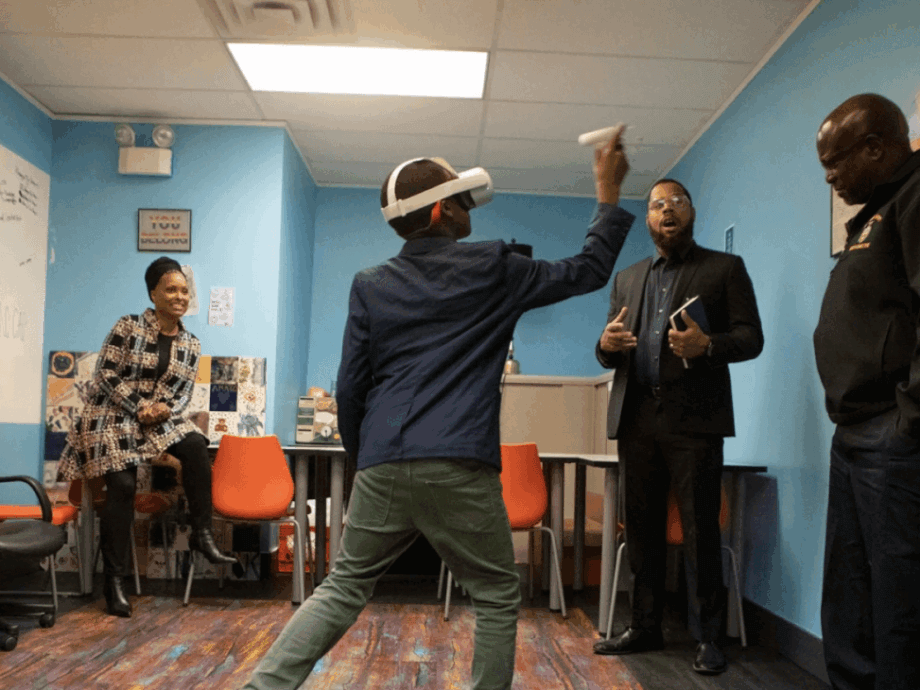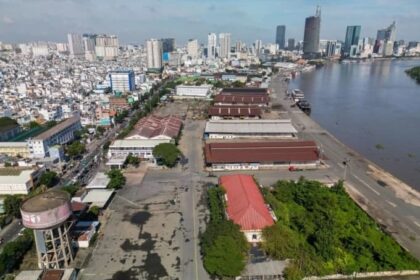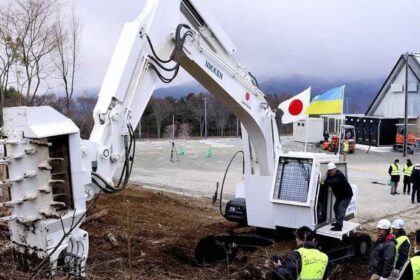Virtual Reality: A New Frontier in Prison Rehabilitation
In the heart of Bangkok, a quiet but profound transformation is underway. A pioneering project led by 17-year-old Kuntee “Get” Poolvoraluk, a senior at Mercersburg Academy in Pennsylvania, is harnessing virtual reality (VR) technology to support women prisoners in Thailand. This initiative is not only revolutionizing the rehabilitation process for incarcerated women but also setting a precedent for the responsible use of technology in addressing complex social challenges.
- Virtual Reality: A New Frontier in Prison Rehabilitation
- Why Focus on Women Prisoners in Thailand?
- How Virtual Reality Bridges the Gap Between Prison and Society
- Overcoming Barriers: Innovation in Action
- Global Context: VR in Prison Rehabilitation Around the World
- Why Gender-Sensitive Rehabilitation Matters
- Measuring Success: Early Results and Future Prospects
- Challenges and Ethical Considerations
- In Summary
Thailand faces a unique crisis: it has the world’s highest incarceration rate for women, with over 80% of female inmates being mothers. The consequences ripple far beyond prison walls, affecting families and communities. Against this backdrop, Get’s project emerges as a beacon of hope, offering innovative solutions to help women prisoners reintegrate into society and reduce the high rates of reoffending.
Why Focus on Women Prisoners in Thailand?
Thailand’s prison system is under immense strain. According to the Thailand Institute of Justice, the country ranks fourth globally in the absolute number of women prisoners, trailing only the United States, China, and Russia. However, when considering incarceration rates per 100,000 people, Thailand tops the world for women prisoners. Most are incarcerated for low-level drug offenses, and a staggering 82% are mothers, often the primary caregivers for their children or elderly parents.
The impact of incarceration on women is profound. Beyond the loss of freedom, women face stigma, economic hardship, and the challenge of reuniting with families who may have struggled in their absence. Recidivism rates are high: over one-third of released prisoners return to custody within two years, often due to limited employment opportunities and social acceptance.
Recognizing these challenges, Thailand has taken steps to improve conditions for women prisoners. The adoption of the United Nations’ “Bangkok Rules” (officially, the United Nations Rules for the Treatment of Women Prisoners and Non-custodial Measures for Women Offenders) has provided a framework for gender-sensitive prison management. Yet, the need for innovative, scalable solutions remains urgent.
How Virtual Reality Bridges the Gap Between Prison and Society
Get Poolvoraluk’s inspiration for the VR project came from a simple but powerful realization: “I couldn’t imagine growing up without my mother.” After learning about the high rates of female incarceration and recidivism in Thailand, Get saw an opportunity to use technology as a bridge between prison life and the outside world.
Working with fellow students Punn Sutivong and Kunpol Poolvoraluk, Get developed a VR program that provides vocational training and mental health support for incarcerated women. The pilot project, launched in June 2024 at Lat Yao Women’s Prison in Bangkok, aims to address the root causes of recidivism by equipping inmates with practical skills and emotional resilience.
VR technology offers unique advantages in this context:
- Immersive Learning: Inmates can experience real-world scenarios—such as navigating public transportation, attending job interviews, or managing daily tasks—within a safe, controlled environment.
- Emotional Preparation: VR can help prisoners process the emotional challenges of reentry, from reconnecting with family to facing societal stigma.
- Accessibility: The system uses affordable smartphone-based headsets, making it scalable and cost-effective for resource-constrained prison systems.
Get’s team created digital guides and tutorials, including navigation aids for Bangkok’s evolving public transport system. These resources help inmates prepare for the practical realities of life after release, reducing the anxiety and confusion that often accompany reentry.
Overcoming Barriers: Innovation in Action
Launching a technology-driven project in a prison environment is no small feat. Security regulations, funding constraints, and the need for staff training all pose significant challenges. Get and his team tackled these obstacles through creativity and collaboration.
To fund the project, Punn Sutivong designed blueprints for bags that inmates could manufacture and sell. This approach not only generated revenue but also provided valuable manufacturing skills that women could use upon release. The project’s emphasis on empowerment—rather than charity—sets it apart from traditional rehabilitation programs.
Feedback from inmates has been overwhelmingly positive. Some have requested VR experiences that allow them to revisit cherished memories, such as walking through Bangkok’s Chinatown. The emotional impact of these virtual journeys is profound, offering a sense of hope and connection that is often missing in prison life.
Global Context: VR in Prison Rehabilitation Around the World
Thailand’s VR project is part of a broader global trend toward digital rehabilitation in correctional systems. The United Nations Interregional Crime and Justice Research Institute (UNICRI), in partnership with the Government of Japan, is exploring how digital tools—including VR—can enhance rehabilitation outcomes worldwide. Their Digital Rehabilitation Project emphasizes the importance of ethical, human rights-compliant technology that is accessible to vulnerable groups, including women and people with disabilities.
Internationally, VR is being used in diverse ways to support prisoner rehabilitation. In California, the non-profit Creative Acts has introduced VR programs in women’s prisons and solitary confinement units. Participants experience scenes from daily life and travel, then process their emotions through art therapy. The results have been striking: prisons report a 96% reduction in disciplinary infractions among participants, and inmates describe newfound emotional awareness and hope for the future.
Sabra Williams, founder of Creative Acts, explains the transformative power of VR:
“The VR stirs up the triggers and the trauma and the emotions—and then the art transforms.”
These programs are not without controversy. Critics argue that technology can be used to further surveil or control inmates, and that digital solutions are no substitute for broader criminal justice reform. However, proponents emphasize the tangible benefits for participants, including improved mental health, reduced recidivism, and greater readiness for life after prison.
Why Gender-Sensitive Rehabilitation Matters
Women are a minority in global prison populations, making up just under 7% worldwide. Yet, their specific needs are often overlooked. According to Penal Reform International, women face unique barriers to rehabilitation, including trauma histories, caregiving responsibilities, and limited access to education or vocational training.
Effective rehabilitation programs for women must be gender-sensitive, addressing both practical and emotional challenges. The Bangkok Rules provide a blueprint for such programs, emphasizing the importance of family connections, mental health support, and opportunities for skill development.
Thailand’s VR project aligns with these principles by:
- Offering vocational training tailored to women’s interests and needs
- Providing mental health resources and emotional support
- Facilitating family reunification and social reintegration
As Prof. Dr. Kittipong Kittayarak, Executive Director of the Thailand Institute of Justice, notes:
“The best thing our society could give [former prisoners] is an opportunity to be a member of a family, and to be welcomed back into society to live their lives without an irremovable stigma.”
Measuring Success: Early Results and Future Prospects
While the VR project in Thailand is still in its early stages, initial feedback from inmates and prison staff has been highly encouraging. Participants report increased confidence, practical skills, and a sense of hope for the future. The project’s long-term goal is to reduce recidivism by addressing the root causes of reoffending—lack of skills, social isolation, and emotional trauma.
Success will ultimately be measured by tracking the outcomes of participants over several years. If the project can demonstrate a sustained reduction in recidivism, it could serve as a model for other countries facing similar challenges.
Get Poolvoraluk and his team are already looking ahead. They hope to expand the use of VR to other vulnerable groups, such as immigrants at Thailand’s borders, and to make the technology accessible to anyone who could benefit from it. As Get puts it:
“Virtual reality lets you escape physical constraints and create a new reality.”
Challenges and Ethical Considerations
Introducing technology into prisons is not without risks. Security concerns, data privacy, and the potential for misuse must all be carefully managed. The UNICRI’s Digital Rehabilitation Project emphasizes the need for ethical guidelines, staff training, and ongoing evaluation to ensure that digital tools are used responsibly and inclusively.
There is also the question of sustainability. Many VR programs rely on external funding or donations, raising concerns about long-term viability. Building partnerships with government agencies, NGOs, and the private sector will be crucial for scaling and sustaining these initiatives.
Finally, technology is only one piece of the puzzle. Successful reintegration requires a supportive social environment, access to employment, and a willingness on the part of communities to welcome former prisoners back into society. As Thailand’s experience shows, multi-stakeholder collaboration is essential for lasting change.
In Summary
- Thailand has the world’s highest incarceration rate for women, with most imprisoned for low-level drug offenses and 82% being mothers.
- A pioneering VR project led by Kuntee “Get” Poolvoraluk provides vocational training and mental health support to women prisoners, aiming to reduce recidivism and ease reentry into society.
- The project uses affordable smartphone-based VR headsets and includes practical guides for navigating life after prison.
- Internationally, VR is being used in prisons to support rehabilitation, with evidence of reduced infractions and improved emotional well-being among participants.
- Gender-sensitive rehabilitation, as outlined in the Bangkok Rules, is crucial for addressing the unique needs of women prisoners.
- Early results from the Thai VR project are promising, but long-term success will depend on sustained support, ethical implementation, and broader social acceptance of former prisoners.
- The initiative highlights the potential of technology to drive social good and the importance of innovation, collaboration, and compassion in criminal justice reform.












